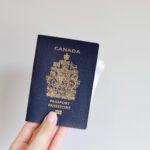Your Visa Gateway: An Immigration Guide to Canada
The prospect of immigrating to Canada can be exciting and overwhelming. With the country’s diverse culture, robust economy, and high standard of living, it’s no wonder why it’s a top choice for many potential immigrants. This comprehensive guide aims to walk you through the process and provide the knowledge and resources to make your journey to becoming a Canadian resident as smooth as possible.
Eligibility and Programs Types
Before embarking on your immigration process, it’s essential to identify which visa category aligns best with your specific situation. Here’s a breakdown of the options available:
To immigrate permanently:
- Express Entry (Skilled Worker Programs): This system is designed for individuals with specific skills in demand in Canada. It’s a fast-track way to permanent residency.
- Family Sponsorship: If you have close relatives who are Canadian citizens or permanent residents, they might be able to sponsor you to become a permanent resident.
- Provincial Nominee Programs: These programs allow Canadian provinces to nominate individuals who wish to immigrate and are interested in settling in a particular province.
- Immigrant Investor, Startup, and Self-employed programs are for entrepreneurs, self-employees and high-net-worth individuals who can make significant investments in the Canadian economy.
To immigrate Temporarily:
- Visitor Visas: For those intending to stay in Canada temporarily for tourism, visiting family or friends, or to conduct business. This visa can allow you to study in Canada if the program lasts less than six months.
- Student Visas: If you plan to study in Canada, you’ll need a student visa. This could potentially lead to a pathway for permanent residence later.
- Temporary Workers: If you plan to temporarily enter the labour market and gain Canadian experience, which can be used to apply for a permanent residence program, these can also be a great choice.
Each category has different requirements and processes, so it’s crucial to consider your circumstances, preferences, and long-term goals when deciding which fits you best.
Studying in Canada
Canada is a beautiful place to study for international students, and the country’s government has made it easier than ever to obtain a student visa. The process involves meeting specific admission requirements, such as submitting transcripts and language proficiency scores and providing proof of financial support. In addition, students must also have a valid passport and pass a medical exam. Once these steps are completed, applicants can apply for their student visa online or through their local Canadian embassy. With so many top-ranked universities and colleges, students worldwide are sure to find the perfect educational opportunities.
Visitor Visa Information
- Visitor Visa Overview: A Canadian visitor visa, also known as a Temporary Resident Visa (TRV), is an official document issued by a Canadian consulate or embassy in your home country. It shows that you’ve met the requirements for admission as a temporary resident, whether for leisure, business, or family visits. A visa is generally issued to a country of visa requirement nationals. In the case of citizen from visa-exempt countries, giving an Electronic Travel Authorization *ETA* must be sufficient for travelling. A visitor visa can also be provided in Canada in case of a status change.
- Eligibility Criteria: To be eligible for a visitor visa, you must show that you have enough money for your stay, have ties such as a job, home, or family that will bring you back to your home country, and are law-abiding and have no record of criminal activity. It would be best if you also were in good health and might be required to have a medical examination. Most of these requirements also apply to ETA applicants. Requirements for an individual inside Canada might be different.
- Application Process: The application for a visitor visa can be made online or on paper, while the ETA is normally submitted online. For the visa process, you’ll need to provide certain documents, such as proof of your ties to your home country and your purpose for visiting Canada or claiming the status of a visitor inside Canada.
- Processing Time and Validity: The processing time for the visitor visa can vary based on factors such as the volume of applications, whether the application is from inside Canada or abroad and your circumstances. It could take a few weeks to a few months. The visa’s validity will also vary, but it generally allows you to stay in Canada for up to six months at a time. It is usually issued for multiple entries and several years of validity, or until the passport reminds valid. For ETA applicants, approval is almost immediate, and an ETA number is issued and linked to the passport, meaning that if you lose your passport, you also lose your ETA. The applicant can always apply for a visitor record to extend the stay beyond the mandatory period.
Remember, this visa or ETA does not guarantee your entry or stay in Canada. The officers decide at the port of access or the processing visa office if the applicant is allowed to enter the country or if the request is approved based on the available information.
Canadian Work Permits
A work permit is a legal document which allows a foreign individual to work in Canada temporarily. This document is only issued inside Canada. When the applicant applies from outside, a multi-entry travel document is given to the applicant to land in Canada to obtain the status of a worker officially. The travel document can be a visa or an electronic travel authorization. A work permit can be opened or closed. It’s usually open if given under one of the programs that allow requesting an open work permit and does not require the applicant to have a valid job offer. However, it is usually tied to a specific employer and job when closed. In both cases, the work permits are for a specified period. When the work permit is open, the applicant will generally be given the right to apply based on the program that supports his request. Still, when the work permit is closed, the primary requirement is an offer of employment from a Canadian employer, but other conditions apply, depending on the type of work permit. There are also cases where an individual can enter the country to work without requiring a work permit.
Permanent Resident Status
Becoming a permanent resident is often the end goal for many temporary immigrants. Learn about the different pathways, rights, and responsibilities of this status. Permanent Resident status allows an individual to live, work, or study anywhere in Canada, with most of the rights of a citizen. Unlike a temporary visa, such as a student or work visa, PR status does not expire as long as you maintain your residency obligations. However, PRs cannot vote or run for political office and can be removed from Canada for serious criminality.
Investor, Startup and Self-employee Programs
These Immigrant Programs aim to attract experienced business owners and managers worldwide. It seeks individuals who can contribute to Canada’s economic growth through significant financial investment, considerable backfield experience and the capacity to adapt their business to Canadian society. In exchange, the program offers permanent residency, allowing successful applicants to run their businesses, live, work, and study anywhere in Canada. They also enjoy many benefits as Canadian citizens, such as healthcare coverage.
Dealing with Refusals
Facing a visa refusal can be disappointing, but understanding the common reasons for denials in Canada can provide valuable insights to avoid such issues in future applications. The following detailed guide aims to understand these common pitfalls comprehensively and offers strategies to strengthen your application.
While the immigration process can be complex, you can successfully navigate the path to Canadian residency with the correct information and preparation.





